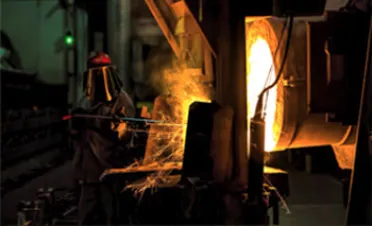Understanding Sheet Metal Stamping Processes and Applications in Manufacturing
Understanding Stamping in Sheet Metal Fabrication
Stamping is a pivotal process in the realm of metal fabrication, particularly when working with sheet metal. The procedure encompasses transforming flat sheets of metal into desired shapes and forms through the application of high pressure. This technique is widely employed across various industries, including automotive, aerospace, electronics, and construction. The versatility and efficiency of stamping make it an integral part of modern manufacturing.
The Stamping Process
The stamping process typically involves several critical stages. First, the sheet metal is fed into a stamping press, which can be either mechanical or hydraulic. The choice of press depends on factors such as the thickness of the material, the complexity of the design, and production volume. Once the metal is positioned correctly, the stamping die, which contains the desired shape, is lowered onto the metal sheet.
The die exerts tremendous force on the metal, causing it to deform and take on the shape of the die cavity. This is a fundamental aspect of the process—using pressure to achieve precise and intricate designs with minimal waste. Stamping can encompass a variety of operations, including bending, drawing, piercing, and blanking. Each operation serves a specific purpose, enabling manufacturers to create complex components efficiently.
Materials Used in Stamping
Sheet metal used in stamping can be composed of various materials, including aluminum, steel, brass, copper, and other alloys. The choice of material significantly impacts the finished product's weight, strength, corrosion resistance, and aesthetic appearance. For instance, aluminum is often chosen for applications requiring lightweight components, while steel may be preferred for its robustness and durability.
Moreover, the thickness of the sheet metal plays a crucial role in the stamping process. Thicker materials may require more force during stamping, while thinner sheets are more prone to damage or wrinkling. As such, manufacturers must carefully select both the material and thickness based on the requirements of the final product.
stamping sheet metal

Advantages of Stamping
The advantages of using stamping in sheet metal fabrication are numerous. One of the most significant benefits is cost-effectiveness, particularly in high-volume production runs. Stamping allows manufacturers to produce large quantities of parts quickly, reducing the cost per unit. Additionally, the precision of the stamping process minimizes material waste, making it an environmentally friendly manufacturing option.
Another advantage is the ability to create complex shapes that might be challenging with other manufacturing methods. Outstanding repeatability and consistent quality make stamping a reliable choice for applications demanding tight tolerances and uniformity. Furthermore, modern stamping technology has advanced significantly, incorporating computer-aided design (CAD) and computer-aided manufacturing (CAM) systems to enhance precision and efficiency.
Challenges and Considerations
Despite its benefits, the stamping process is not without challenges. One of the primary issues encountered during stamping is die wear. Dyes can degrade over time due to the high pressure and friction experienced during the stamping process. Regular maintenance and replacement of dies are crucial to ensure continued precision and quality in production.
Additionally, the choice of material can also present challenges. Some materials may be more difficult to stamp, requiring additional considerations such as lubrication and the proper selection of stamping parameters. Manufacturers must stay informed about advancements in materials and technology to adapt their processes accordingly.
Conclusion
Stamping in sheet metal fabrication is a sophisticated technique that plays an essential role in modern manufacturing. Its ability to produce complex and precise parts quickly and cost-effectively makes it invaluable across various industries. As technology continues to evolve, so too will the stamping processes, paving the way for even greater advancements in production efficiency and product quality. Understanding the dynamics of stamping can empower manufacturers to optimize their operations and remain competitive in an ever-evolving marketplace.
-
OEM Sand Cast Pump Valve Fittings - Baoding Hairun Machinery And Equipment Trading Co., Ltd.NewsJul.31,2025
-
OEM Sand Cast Pump Valve Fittings - Baoding Hairun | Precision Engineering, CustomizableNewsJul.30,2025
-
OEM Sand Cast Pump Valve Fittings - Baoding Hairun Machinery And Equipment Trading Co., Ltd.NewsJul.30,2025
-
OEM Sand Cast Pump Valve Fittings - Baoding Hairun Machinery And Equipment Trading Co., Ltd.NewsJul.30,2025
-
OEM Sand Cast Pump Valve Fittings - Baoding Hairun Machinery|Precision Engineering&Fluid ControlNewsJul.30,2025
-
OEM Sand Cast Pump Valve Fittings - Baoding Hairun Machinery And Equipment Trading Co., Ltd.NewsJul.30,2025















